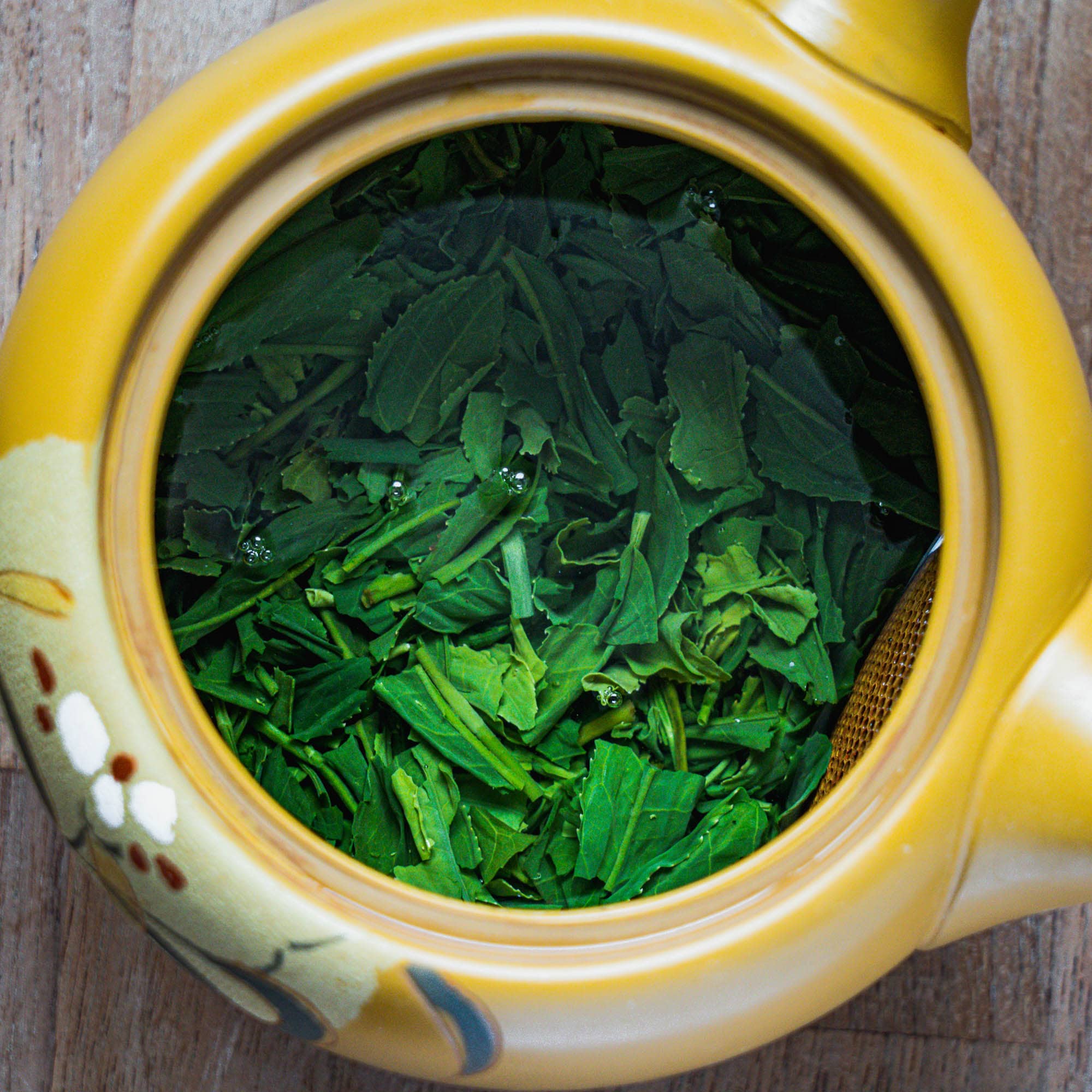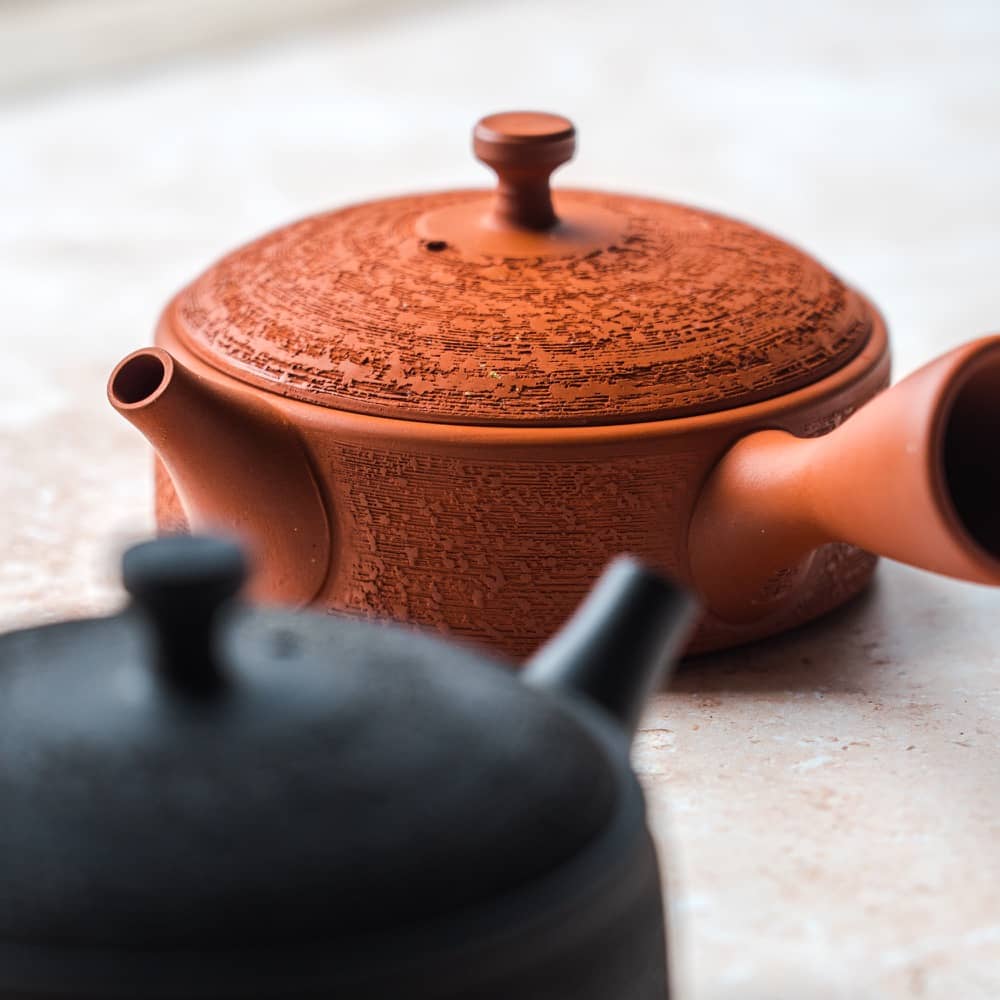Intro to Brewing Sencha
So, you have some sencha and a kyusu, now how exactly do you brew it? Senchas are often very sensitive to subtle changes in brewing parameters, which can make them incredibly versatile and customisable, but also daunting to brew.
The following brewing parameters are by no means the only way to brew these teas. However, they are almost guaranteed to produce a delicious cup every time.

Before we even open a packet of tea, let's go over the basics of tea brewing and what tools and teaware you'll want to have so you can extract the most from your leaves.
The three most important parameters of tea brewing are:
- Leaf-to-Water Ratio
- Water Temperature
- Infusion Time
Each of these variables has a different effect on the final cup, and to control them we'll need to accurately and consistently measure them. While you don't need any fancy teaware or equipment to make delicious tea, having the right tools for the job will certainly make the whole experience far more enjoyable and consistent.
We recommend having the following:
- A teapot, preferably a kyusu or houhin (see our guide on Japanese teapots to learn about these)
- A teacup
- A scale with 0.1g precision
- A kettle
1. Controlling Leaf-to-water Ratio
To control this, we need to measure how much tea and how much water we’re using. To weigh tea leaves we highly recommend using a scale with at least 0.1g precision. Weighing tea is much more accurate and consistent than using a scoop or spoon, as different teas have different densities: a tightly rolled sencha is much denser than a fluffy white tea.
The easiest way to measure our water is to know the volume of the cups we’re drinking from or the teapot we’re brewing in, and use these to measure the water. If you don’t know the volume of your teaware, you can simply measure how much water they hold, using a measuring cup or a scale.
2. Adjusting Water Temperature
Measuring water using teaware also serves to control the temperature of the water: pouring boiling water into a cold piece of teaware cools the water by roughly 10°C while heating up the teaware. While a temperature-controlled kettle can yield more accurate results, this traditional method is fast, easy, and can be very consistent.
3. Managing Infusion Time
A stopwatch, a sand timer, a clock, counting in your head — all of these can work!
Brewing Sencha
Now that you know how to control brewing parameters, let's brew some tea! For orthodox senchas, we generally recommend the following brewing parameters:
1-2g/50ml | 70-80C | 60s, 0*s, 45s
Orthodox sencha, also called normal-steamed (futsumushi) encompasses the whole range from lightly-steamed (asamushi) to medium-steamed (chuumushi) senchas, but does not include deep-steamed (fukamushi) senchas. These have their own peculiarities which means they are usually brewed slightly differently.
Step One: Weigh Your Leaves

We like to use between 1g and 2g of tea per 50ml of water, generally using more tea for higher quality senchas, and less for lower quality teas. You can adjust this to suit your tea and your taste. For this tea, we used 3g — perfect for our 70ml yunomi.
Step Two: Fill Your Cup(s) with Freshly Boiled Water

Pouring the hot water into the cup(s) first measures out exactly how much water you’ll need while also warming up the teaware. In heating up the cups, the water cools down to around 85-90C.
Step Three: Add Leaves to the Teapot

Try to make sure the leaves are even in the bottom of the pot.
Step Four: Pour Water From the Cup(s) into the Teapot

Pouring the water from the cup(s) into the cold pot cools the water down again to around 75-80C — the perfect brewing temperature for sencha. Now start your timer! (or start counting…) We'll brew our first infusion for 60 seconds.
Step Five: Wait (patiently)
Once all of the water is in the pot, leave it to steep undisturbed. Don’t swirl or agitate it as this will affect the extraction. If you want to let the water cool down even more, you can leave the lid off of the teapot and watch the leaves slowly unfurl.
Step Six: Pour and Enjoy

After a minute, it’s time to pour. Japanese teas are said to taste best when poured slowly.
There are a few reasons for this:
- it helps keep the filter from becoming clogged,
- it agitates the leaves the least and prevents more fine particles from passing through the filter,
- and it prevents tea from leaking out from under the lid
Be sure to pour to the very last drop to get the most out of your tea as the last drops contain the most concentrated flavour. This also ensures that practically no water is left for the leaves to steep in between brews.
If you’re making tea for multiple cups, make sure to alternate pouring between the cups, as the tea that leaves the teapot first is weaker than the last drops. Alternatively, you can pour the tea into a pitcher, which evens out this difference, and from there pour it into the cups.
Further Infusions
Most senchas can be enjoyed for at least three infusions. Between infusions, it is important to leave the lid off of the teapot or leave a small gap for steam to escape.
For the second infusion, repeat steps two and four, but then pour the tea out almost immediately. As the leaves have already unfurled, they extract faster and 0-5 second infusion is all they need to release plenty of flavour.
For the third infusion, you can use slightly hotter water and steep for around 45 seconds.
Bonus Step: Experiment!
Sencha is very versatile, and playing around with these variables can lead to some drastically different experiences. In another guide, we’ll take a deeper look at what each variable does, and how you can use that knowledge to tailor your tea brewing to each sencha you encounter.

Loose Leaf











